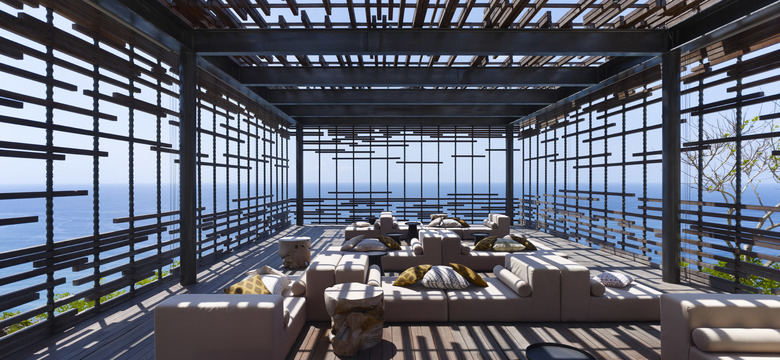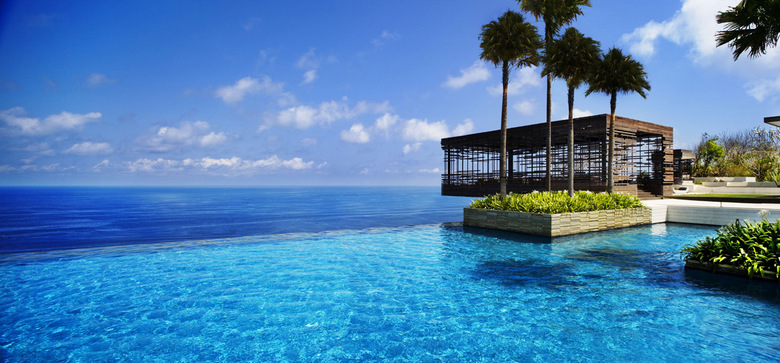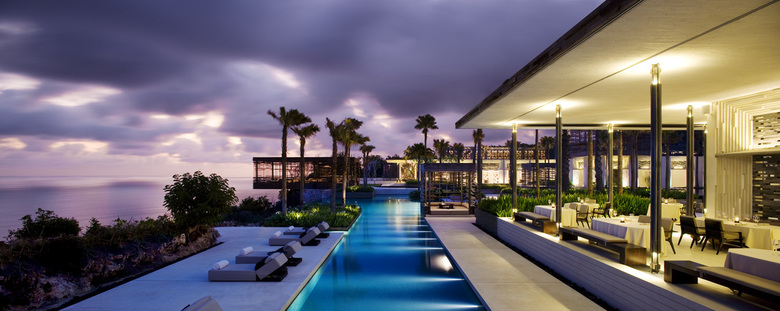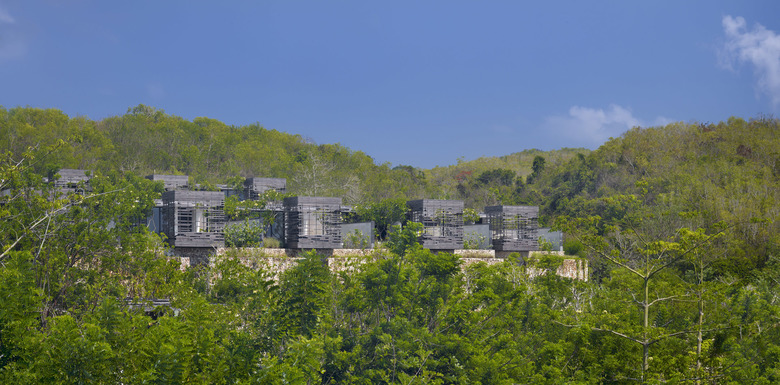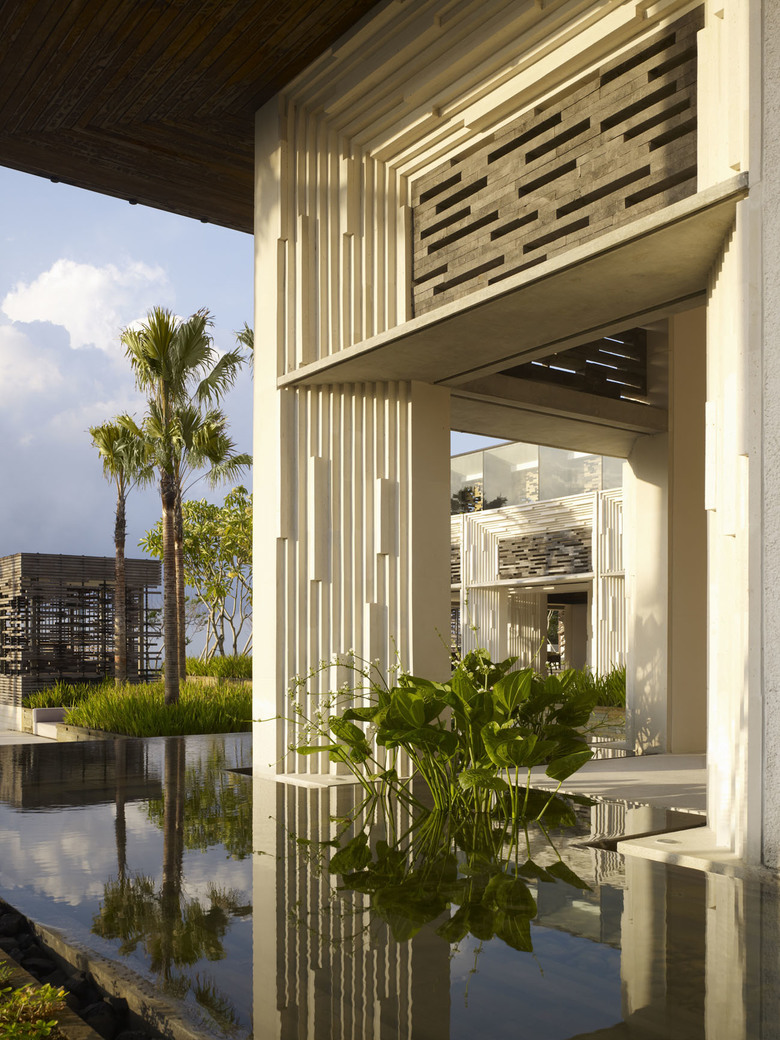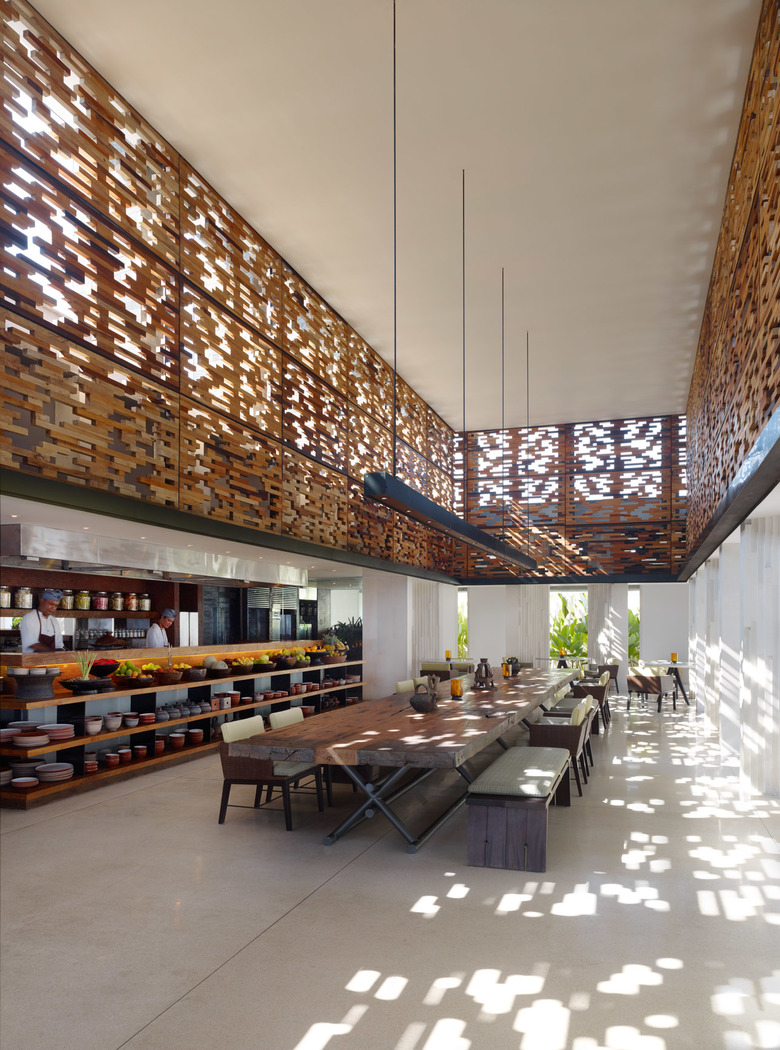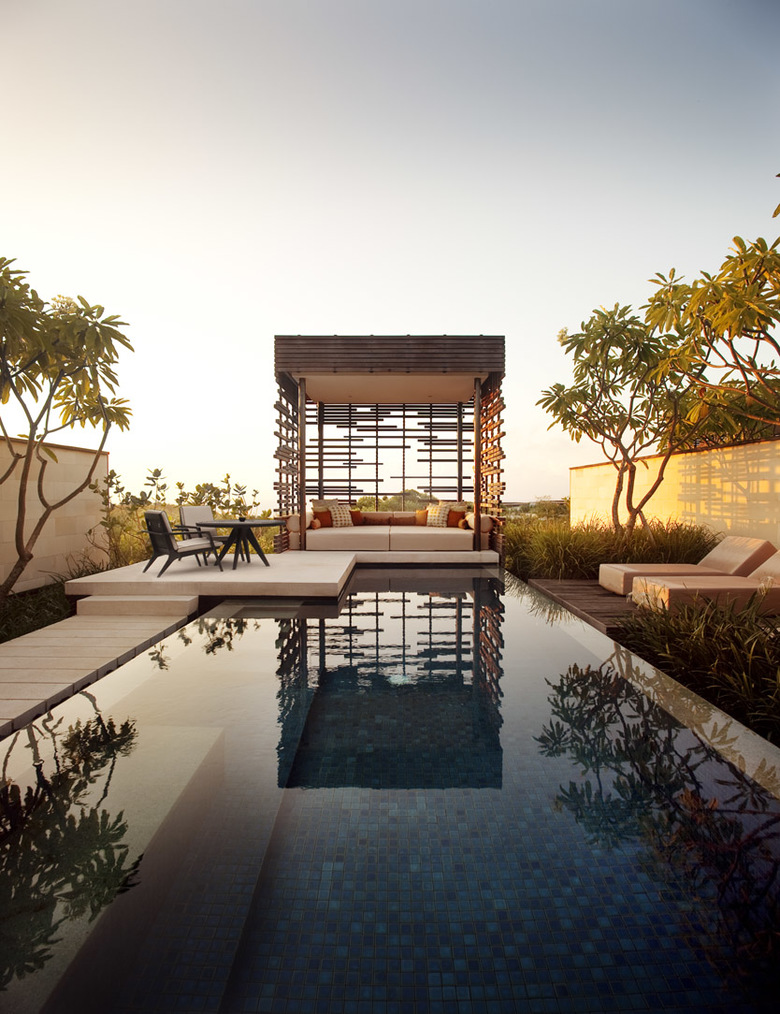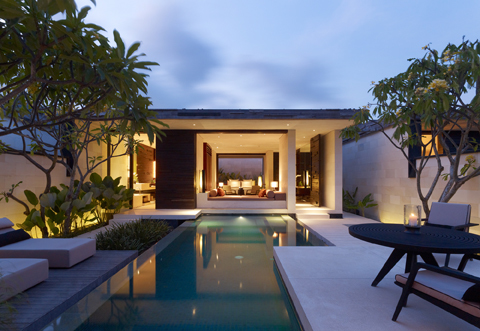Alila Villas Uluwatu
Bali, Indonesia, Indonesien
This hotel and villa development is a Green Globe 21 rated ecologically sustainable development. Located on the dry savannah landscape of the Bukit Peninsular on the Indonesian island of Bali, it comprises a 50-suite hotel with 35 residential villas. The development proposes luxury as delight and enjoyment of the natural beauty and sense of place, rather than excessive consumption. The design combines the delights of traditional Balinese pavilion architecture and rural landscapes with modern dynamic treatment of space and form.
The architecture is inspired by the local farmers’ terraces. A terraced roof was developed using Balinese volcanic pumice rock, which is a natural insulating material. These low terraced roofs keep open the site’s unique wide panoramas. The hillside villas are designed as pavilions linked by bridges across water gardens, tucked into the hillside as terraces.
Levels follow the contours to avoid cutting and fill. All large trees are maintained or transplanted. Site vegetation was surveyed and documented, a site nursery propagated the native plants for use in the landscaping. The local plants are adapted to the dry savannah landscape by going dormant in the dry season then flowering spectacularly and provide a unique seasonal display of flowers. These native gardens require far less water, and support local animals and birds.
Materials are all sourced locally – the walls use stones from the actual site from the road cuttings, while all other materials are either from Bali or Java. Only recycled Ulin timber and bamboo was used. Craftsmen in Java and Bali made the furniture, lamps and accessories.
Environmental techniques used include:
Rainwater collection and water recycling in retention ponds
Aquifer recharging through soaks, swales and rain gardens
Wastewater goes to grey water system for watering plants and toilet flushing
Sewerage is treated and sewerage water recycled in grey water system
Huge overhangs to allow natural cooling
Water heating using heat pumps
Landscaping based on natural vegetation to encourage wildlife
Landscaping based on dry-climate natural vegetation to save water
ecycled plantation and renewable timber
Saltwater pools
Waste separation and recycling
Naturally ventilated public areas
Low energy lighting
The environment is located in an impoverished, rural area, replacing marginal agriculture with tourism that generates substantial employment and income for local people. Through showcasing local skills, materials and vernacular elements, it confirms the local people’s opinion that they live in a marvellous place that should be cherished and maintained.
- Hotellerie + Gastronomie
- Hotels + Hostels + Gästehäuser
- Restaurants, Bars, Clubs
- Ferienorte
- Spa + Wellness
- Architekten
- WOHA
- Jahr
- 2009
Dazugehörige Projekte
Magazin
-
-
Building of the Week
A Loop for the Arts: The Xiao Feng Art Museum in Hangzhou
Eduard Kögel, ZAO / Zhang Ke Architecture Office | 15.12.2025 -
